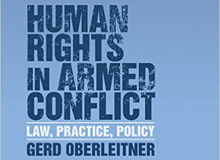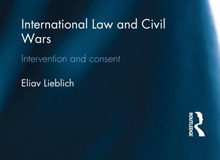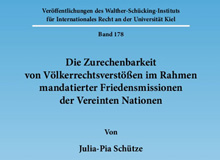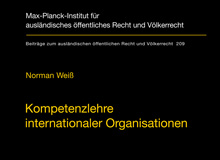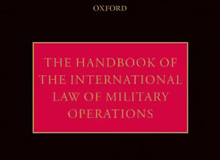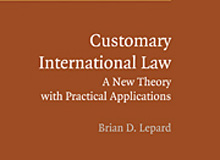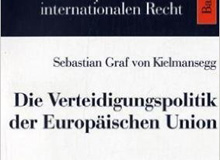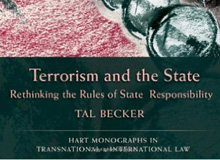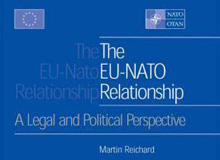
Vincent Kronenberger and Jan Wouters (eds), The European Union and Conflict Prevention: Policy and Legal Aspects (T.M.C. Asser Press, The Hague, 2004).
It has frequently been observed that conflict prevention lies at the very heart of the European integration process. Indeed, back in 1950 the Schuman Declaration called for the unification of Europe as a measure indispensable to the preservation of peace, while today Article I-3(1) of the Treaty establishing a Constitution for Europe confirms that the promotion of peace is still one of the European Union’s basic aims. Peace, and in particular its preservation in Europe, was and remains one of the political mainsprings of European unification. It is only in recent years, however, that the prevention of violent conflicts in and among third States has emerged as an explicit policy objective of the EU across the whole range of its external activities.
This process began in June 1992, when the Lisbon European Council adopted a report on the likely development of the Common Foreign and Security Policy. The report identified the ‘prevention and settlement of conflicts’ as a suitable objective for common action, noting in particular that the CFSP should enable the EU to have an ‘improved capacity to tackle problems at their roots in order to anticipate the outbreak of crises’. Over the next decade conflict prevention gradually moved to the forefront of European foreign policy. The end of the Cold War and the resulting geopolitical upheaval presented the EU with new opportunities as well as new challenges in its external relations. In 1994, the European Council declared that the EU shared a common interest with the countries of Central and Eastern Europe ‘in preventing conflicts related to issues such as borders and frontiers’, and initiated a political dialogue on conflict prevention with the Organisation for African Unity. Conflict prevention assumed an increasingly prominent role in European Community development cooperation too. In 1996, the European Commission presented a communication on peace-building and conflict prevention in Africa. Starting from the premise that the existence of violent conflicts undermines the achievement of the EU’s declared policy goals, the Commission argued that the EU should make optimal use of all available instruments, including development assistance, to address the root causes of conflicts, with the ultimate objective of attaining a situation of structural stability. The Council embraced a similar approach when it adopted a Common Position on conflict prevention and resolution in Africa in June 1997.
By the end of the 1990s conflict prevention was high on the EU’s agenda, and international events, such as the crisis in Kosovo, ensured that it remained so. Nevertheless, at this point the EU had not yet begun to develop a comprehensive conflict prevention policy, and its efforts remained fragmented along geographical and thematic lines. This changed after the Cologne European Council decided to launch the European Security and Defence Policy in 1999. The ESDP is designed to provide the EU with the operational capabilities required to carry out the so-called Petersberg tasks—generically referred to by the European Council as ‘conflict prevention and crisis management tasks’—enumerated in Article 17(2) of the Treaty on European Union. The momentum generated by the launch of the ESDP, especially by the development of its civilian aspects, made it possible for conflict prevention to emerge as a top policy priority for the EU. The break-through came in June 2001, when the Göteborg European Council announced that ‘conflict prevention is one of the main objectives of the Union’s external relations and should be integrated in all its relevant aspects, including the [ESDP], development cooperation and trade’. The Göteborg European Council also endorsed an EU Programme for the Prevention of Violent Conflicts. In order to strengthen the Union’s preventive capabilities, the Programme proposed a series of practical steps to enable the EU to set clear political priorities, improve its early warning, action and policy coherence, and enhance the exchange of information and cooperation with international, regional and other organisations. Most importantly, the Programme directed all relevant institutions of the EU to mainstream conflict prevention within their areas of competence.
It is fair to say that conflict prevention has in recent years become the ‘new orthodoxy’, as Christopher Hill put it, of European foreign policy. In line with the Göteborg Programme, the Council has significantly strengthened its early warning capacities and holds regular discussions to determine the political priorities of the EU’s preventive activities, while the Commission has taken steps to mainstream conflict prevention in the policies falling within its responsibility and expertise, above all in the area of development cooperation. As a result, the EU now takes a far more systematic and integrated approach to the prevention of conflicts as before.
The book under review aims to provide a comprehensive analysis, from a legal perspective, of the EU’s strategy for the prevention of violent conflicts in third States. The book consists of twenty-five chapters, in addition to an introduction and a conclusion written by the editors. It is divided into three Parts. Part One (Chapters 1 and 2) discusses the analytical tools and the procedures developed by the Commission and the Council to identify the causes of violent conflicts. Part Two (Chapters 3 to 15) assesses the working of the EU’s conflict prevention policy. Part Three (Chapters 16 to 25) considers the experiences of other actors engaged in the field of conflict prevention, and examines their relationship with the EU.
Opening Part One is a contribution by Javier Niño-Pérez on the Commission. It discusses in detail the check-list of conflict indicators on which the Commission relies in drafting its Country or Regional Strategy Papers (CSPs or RSPs) in order to systematically integrate conflict prevention considerations into the programming of EC development assistance. Conveniently, the check-list is reproduced as an annex. In Chapter 2, Niall Burgess examines the Council’s resources for early warning.
Part Two is divided into three sections. Part Two A (entitled ‘History, strategy and institutions’) begins with a chapter by Jan Wouters and Frederik Naert on the historic evolution of the EU’s conflict prevention activities. Chapter 4 by Reinhardt Rummel is a critical analysis of the EU’s involvement in conflict prevention from a strategic point of view. According to Rummel, the EU is predestined to make a leading contribution to conflict prevention because of its worldwide interests. However, whereas the EU has introduced certain measures of prevention and has enjoyed some limited success in places like Macedonia, it has not yet politically mainstreamed conflict prevention. At present the Union still prefers to talk about its assets rather than to use them. Chapter 5 by Javier Niño-Pérez discusses the various long-term and short-term instruments available to the EU. In Chapter 6, Simon Duke examines the institutional and financial context of the EU’s preventive activities, and finds that the rapid institutional build-up of the last few years has not been matched by the development of adequate financial arrangements.
Part Two B (‘Towards a structural conflict prevention’) starts off with Chapter 7 by Stephan Keukeleire explaining the concept of structural conflict prevention. Like Rummel before him, Keukeleire notes that many of the EU’s sectoral policies do not effectively contribute to removing the root causes of violent conflicts in third countries. For instance, structural changes in the EU’s agricultural and external trade policies would have far more profound effects on foreign countries and regions than the various conflict prevention measures employed by the EU as part of its development cooperation programmes. Chapter 8 by Andrea Rossi considers what role regional trade agreements concluded by the EU play in fostering stability abroad, while Bernd Martenczuk’s contribution in Chapter 9 describes how the EC’s cooperation policies with developed and developing countries address the task of conflict prevention. Chapter 10 by Andrea Weiss offers a welcome analysis of the frequently overlooked, but nevertheless critical, environmental dimension of the EU’s preventive efforts. In a short piece Sybilla Fries goes on to examine in what ways conflict prevention is linked to questions of human rights, democracy and the rule of law. Chapter 12 by Loïck Benoit addresses the relationship between conflict prevention and the combating of terrorism and illegal trafficking in drugs, humans and firearms. It is a pity that this very relevant chapter is somewhat spoiled by linguistic infelicities. The last piece in this section, Chapter 13 by Joost Lagendijk and Ute Seela, considers whether certain EU policies might actually harm the cause of conflict prevention by contributing, directly or indirectly, to violent conflicts and their root causes.
Part Two C (‘Selective geographical case studies’) provides a valuable insight into how the EU implements its preventive strategy. Chapter 14 by Steven Blockmans examines the EU’s attempts at conflict prevention and crisis management in the Western Balkans, while Chapter 15 by Erik J. Eidem surveys the EU’s engagement in Sub-Saharan Africa.
Part Three consists of two sections. Part Three A (‘International organisations’) begins with Chapter 16 in which Manuel Szapiro considers how cooperation between international organisations could be enhanced in order to prevent armed conflicts. Chapter 17 by Jan Wouters deals with the UN’s involvement in conflict prevention and its growing cooperation with the EU. Edwin Bakker’s account of the OSCE in Chapter 18 suggests that the OCSE’s extensive practical experience could constitute a rich source of learning for the EU. In Chapter 19, John Kriendler sheds some light on NATO’s crisis management capabilities and procedures, while Jan Kleijssen examines the Council of Europe’s preventive activities in Chapter 20. Chapter 21 by John Kirton looks at the role and initiatives of the G8. The final contribution in this section, Chapter 22 by Ian Bannon, offers a detailed account of the World Bank’s relevant instruments and policies.
Part Three B (‘Other actors’) contains three chapters dealing with the role of non-governmental organisations. In Chapter 23, Stéphane Kolanowski sets out why the International Committee of the Red Cross shares a common interest with the EU in preventing violent conflicts. Chapter 24 by Heike Schneider describes what contribution non-governmental organisations can make to conflict prevention, and why the EU should cooperate with them. Finally, Chapter 25 by Vincent Kronenberger examines what role the business sector can play in conflict prevention.
The book under review offers a detailed and reliable guide to the EU’s preventive activities at a time when the Union’s conflict prevention and crisis management policy is still very much in its trial phase. The individual chapters are written to a high standard by seasoned observers and by experts working in the field. The decision to devote a large section of the book to the analysis of the experiences of other relevant organisations allows the reader to place the EU’s strategy into the broader international context and compare the EU’s activities with the practices of other organisations. The book clearly achieves its aim of providing a comprehensive analysis of the EU’s conflict prevention strategy, though a handful of questions still remain to be explored. For example, a chapter comparing the military and civilian approaches to, and instruments for, conflict prevention, and how these interact, would have been helpful. Irritatingly, at times the book reads rather like a collection of twenty-five unrelated essays, especially when successive chapters persist in describing events and concepts already covered in previous contributions. However, the editors’ conclusion at the end of the book goes some way to add a sense cohesion to the volume. Having noted the difficulty in assessing the efficiency of the EU’s preventive activities, the editors identify and discuss three main challenges facing the Union’s conflict prevention policy: intra-EU institutional and coordination problems, financial and human capacity challenges, and seeking an appropriately structured division of labour with international organisations.
According to Robert Kagan, ‘The transmission of the European miracle to the rest of the world has become Europe’s new mission civilisatrice’. The volume reviewed here constitutes a most valuable guide as to how the EU goes about this task.
Published in (2006) 31 European Law Review 125–128

